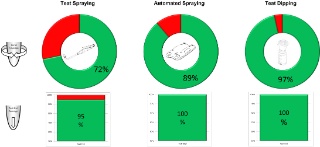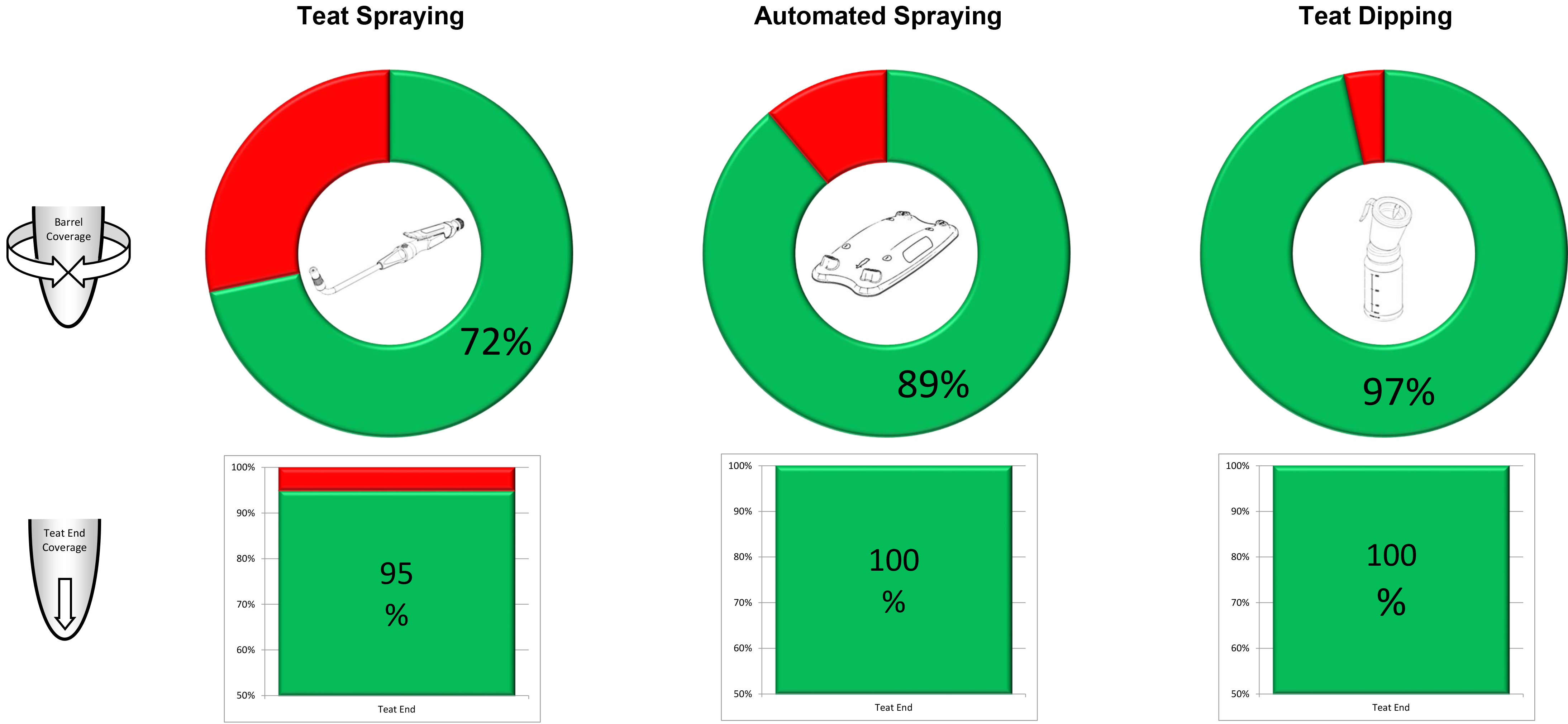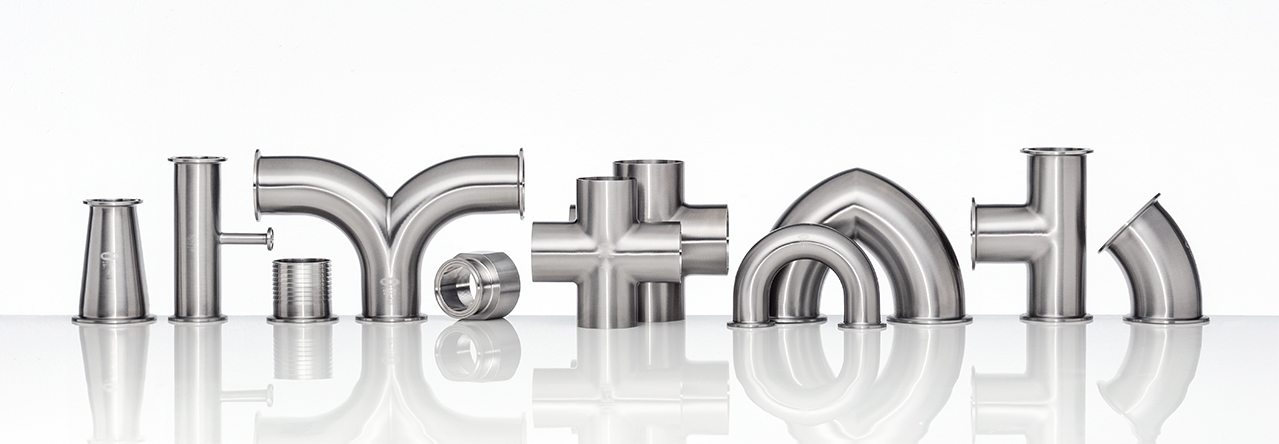
Introduction
Between June 2013 and March 2018, three evaluation studies were carried out by The Dairy Group on the efficacy of teat end and teat barrel coverage by three methods of applying post-milking teat disinfectants:
- Vacuum operated hand-held spray lance systems;
- Ambic Locate'n'Spray post milking teat disinfectant system (using six different spray duration settings);
- Dipping using dip cups
Evaluation Method
Teat barrel and teat end coverage were assessed post application of the teat disinfectant product. The method used was the same in all three studies.
To assess barrel coverage, the front and back of the teat was scored as a maximum of 50, i.e. if all one teat side was completely covered this equated to 50 (100% coverage of that plane), whereas a score of 25 meant that only half of that plane was covered in chemical. If both sides of the teat barrel were completely covered this equates to 100% teat barrel coverage.
Teat end coverage was assessed as either covered or not covered (hit or a miss). Disinfectant use was also measured.
Results
Teat End Coverage
Teat end coverage was measured at 94% for manual teat spraying, but with a range from 80 - 100% (1). For the Locate'n'Spray teat disinfection system the results were 98% and 96 - 100% (2), respectively, and for teat dipping the results were at 99% and 98 - 99% (3), respectively.
Teat Barrel Coverage
For manual teat spraying there was a large variability between farms and between operators at the same farm. The front plane of the front teats was often missed. This contrasts with both the automatic teat sprayer and manual teat dipping methods where reliability of coverage was more consistent. Average teat barrel coverage was 50%, 82% and 95% for manual spraying, automatic spraying and teat dipping, respectively.

Conclusion
- Teat dipping has the advantage of consuming less teat dip chemical and delivering better teat end and teat barrel coverage but is more labour intensive.
- Manual teat spraying consumes more teat dip chemical, is less labour intensive, but delivers more variable teat end and barrel coverage because it is more dependent on the quality of labour and time available.
- Automated teat spraying is less labour intensive than conventional teat spraying and delivers more consistent teat end and barrel coverage with potentially lower teat dip chemical consumption through superior process control.
References
- Pocknee, B.R., Thornber N., Kingston C., Hiley R., May R., Cinderey M. and Carlsson A. (2013). Effectiveness of teat coverage with post milking teat disinfectant using a vacuum operated teat spray system. Proceedings of the British Mastitis Conference, Worcester, 2013, pp 45-46.
- Pocknee, B.R, Ohnstad, I.C, Kingston, C., Hiley, R., McGraw, C., May, M. and Cinderey, M. (2014). Evaluation of teat coverage with an automatic post milking teat disinfectant system using six different spray duration settings. Proceedings of the British Mastitis Conference, Worcester, 2014, pp 17-18.
- Ohnstad, I.C., Donaldson, D, Kingston, C., Hiley, R. and Pocknee, B.R. (2018). Effectiveness of teat coverage with post milking teat disinfectant applied with a dip cup. Proceedings of the British Mastitis Conference, Worcester, 2018, in Press.

